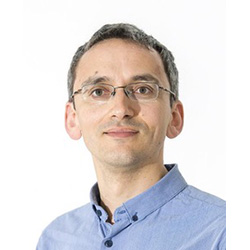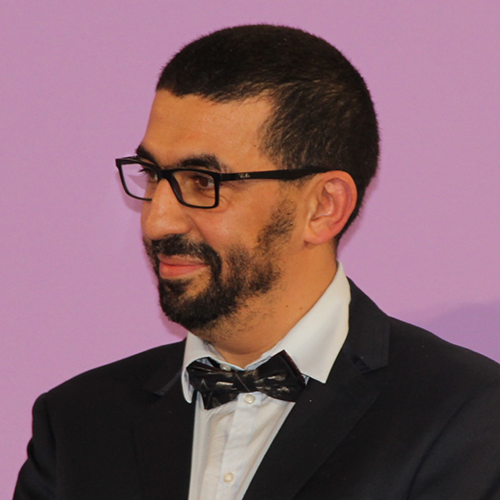Departments
![]() Signaling through Chromatin
Signaling through Chromatin
The research projects developed in this department consider the information flow to and from the genome. The overall ambition of our teams is to make breakthrough conceptual advances in the understanding of the molecular, cellular and systemic mechanisms by which the genome coordinates its function(s) with various cellular activities and its environment.
We are carrying out innovative projects based on the hypothesis that some pathologies develop because of disrupted or modified communications between the genome and its cellular or extracellular environment, which leads to pioneering work in disease detection and therapy.
These projects balance focussed conceptual ideas with a diversity of experimental models. They include different facets of non-overlapping but related aspects of chromatin biology, for instance studying the relationship between chromosome structure/dynamics in various physiological and pathological settings and in different model organisms. The research programs present a unique combination of basic research with disease-relevant translational research and direct clinical and industrial applications.
![]() Microenvironment, cell plasticity and signalling
Microenvironment, cell plasticity and signalling
Our research programs are dedicated to study the fundamental principles of life and disease and developing new therapies and technologies for cancer and chronic disease treatments. Our department is exploring the molecular mechanisms whereby microenvironment modulates cell shape and cell fate to tackle some of the greatest challenges of biomedical science. We are investigating how biochemical and biophysical properties of the environment alter cell behavior through cooperation between receptors, coordination of signaling network, cytoskeleton organization and genetic and epigenetic reprogramming both in vitro and in vivo. We are combining not only different models such as two and three dimensional (2D/3D) monolayer, organotypic culture models, xenograft/syngenic, transgenic mouse models and clinical specimens but also interdisciplinary approaches including physics, chemistry and mathematics allowing big data analysis, as well as whole body, tissular, cellular and molecular imaging. Our multidisciplinary department strongly works together with physician-scientists, chemists and clinicians to translate molecular insights into new cancer and chronic disease treatments.
![]() Environnement, Reproduction, Infections, Cancer
Environnement, Reproduction, Infections, Cancer
Both prevention and therapy are required to preserve and improve the health of populations. It is the conjunction of efforts in the areas of prevention and therapy that allowed the epidemiologic transition of the last centuries in industrialised countries. This fact is acknowledged for public action and must be implemented in biomedical research.
The aim of the Department of Prevention and Therapy of Chronic Diseases is to identify controllable risk factors, understand their mechanism of action and develop innovative drugs and therapeutic strategies for chronic diseases.
Disease determinants considered include infectious agents (such as Toxoplasma, Malaria agent and hepatitis viruses), host response, and physical/chemical factors such as atmospheric pollutants, nanoparticles and endocrine disruptors, all of which are relevant targets for prevention.
Regarding therapy, we aim to identify prognostic factors for cancer, develop and validate therapies/drugs, particularly immunotherapeutic drugs. Mechanistic knowledge generated by our own department (in the fields of host-pathogen interactions, infectious and environmental factors-driven chromatin remodelling and other epigenetic changes, cell signalling through p53-LKB1 interactions) and the other departments will be fully exploited, as well as more wholistic approaches, for the benefits of patients.

 Signaling through Chromatin
Signaling through Chromatin
 Microenvironment, cell plasticity and signalling
Microenvironment, cell plasticity and signalling
 Environnement, Reproduction, Infections, Cancer
Environnement, Reproduction, Infections, Cancer